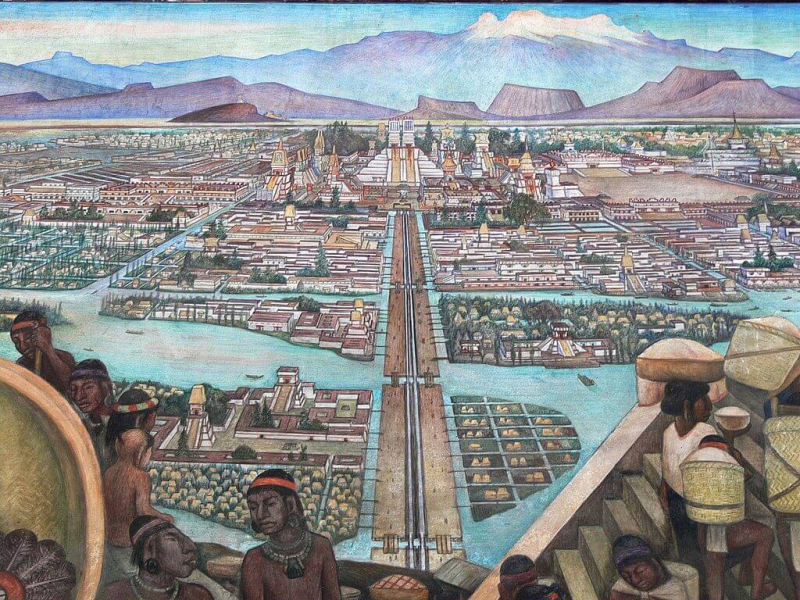They Constructed A Double Aqueduct To Bring Fresh Water To Tenochtitlan
As Tenochtitlan's Aztec population rose, so did the demand for fresh water. The water level beneath Tenochtitlan was just 4-5 feet below the city, and the water collected was brackish, thus it was not a viable source of fresh water. Shallow wells were dug, and the water obtained was used for domestic purposes. In 1418, an aqueduct was built from Chapultepec springs to Tenochtitlan, bringing fresh water appropriate for cooking and drinking. They started building the Chapultepec aqueduct in the 1420s to transport clean water to their city from the springs on the mainland of Chapultepec. The aqueduct was divided into two channels, each measuring about 5 feet high and 3 feet broad. When one channel was being maintained, the other was delivering water to the city, maintaining a steady supply.
The Chapultepec aqueduct was built to supply Tenochtitlan, today known as Mexico City, with potable water. The water for this project came from the Chapultepec springs. During the 15th century, the Aztecs built two aqueducts that followed the same route from the springs, the first of which was destroyed by flooding and the second by the Spanish. A colonial aqueduct was erected after the Spanish conquest, the ruins of which may be found near Metro Sevilla. The three-mile Chapultepec aqueduct supplied water to public fountains and reservoirs. Only a few ancient civilizations could grasp the architecture and building of such a sophisticated aqueduct, hence it is regarded as a noteworthy Aztec achievement.











